Unless you have been advertising online blindly or spending too much time on TikTok, you have probably seen the acronym CPL. Cost Per Lead (CPL) is a metric that most media buyers track for the brands they advertise for.
But is CPL really all that important for measuring digital marketing performance?
We’re going to get to that.
But first, let’s dive into what CPL really is and how to calculate it.
What is Cost Per Lead (CPL)?
Cost Per Lead is exactly that. It is calculated by totaling the amount of ad spend and dividing it by the number of leads acquired.

This can be done at the channel, campaign, or ad level.
CPL can be used as a general indicator of whether your advertising is working, if you are growing your email list affordably, or if you are really off the mark and need to make some major adjustments.
No one wants to bleed money, but you also don’t want to be buying tons of worthless leads.
You’ll notice that CPL does not include leads acquired from organic traffic or social media postings. Normally you only want to calculate CPL for paid advertising. Organic leads have a CPL of $0, which is basically free!... but you still want to consider the cost of time or labor to bring in those leads.
Example of Cost Per Lead Calculation
For example, let’s go over how you could calculate CPL for your Facebook advertising.
First, you must decide what time period you wish to know your CPL for. This could be:
- Entire life of your ad account.
- The past year.
- The past month.
- The past week.
- The past day.
- Any other time frame you wish.
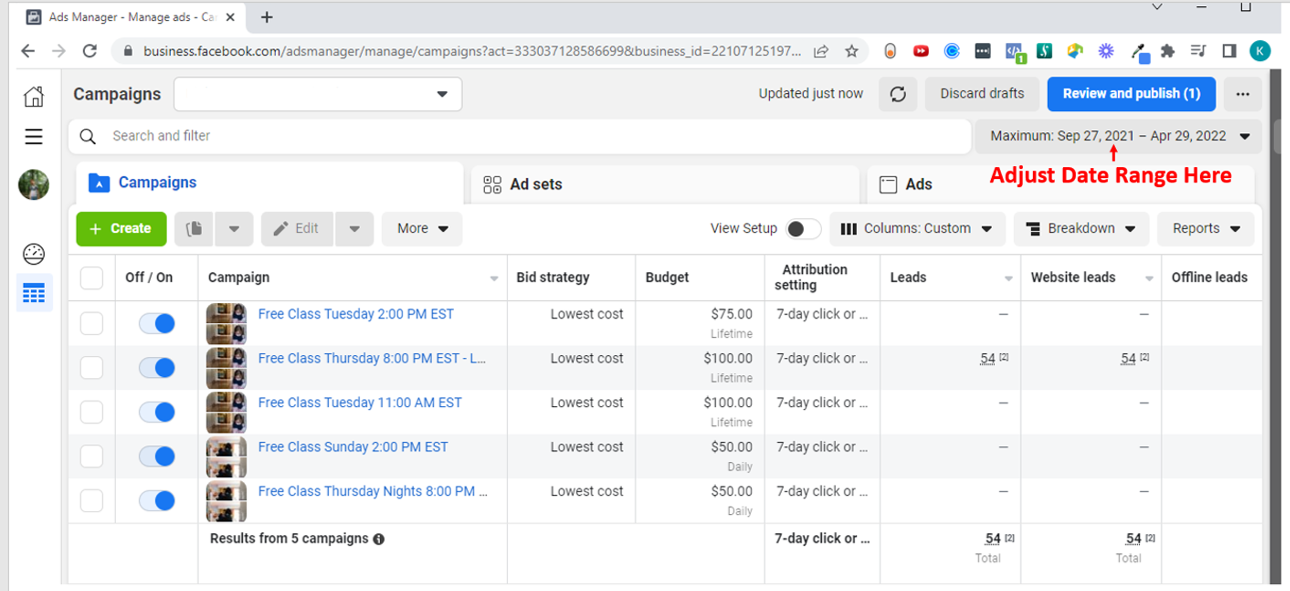
Next, you want to look at how much total ad spend you had across all campaigns for that time period. Or, if you wanted to look at one campaign only, you would do that instead. Total Amount Spend in this example is $485.65.
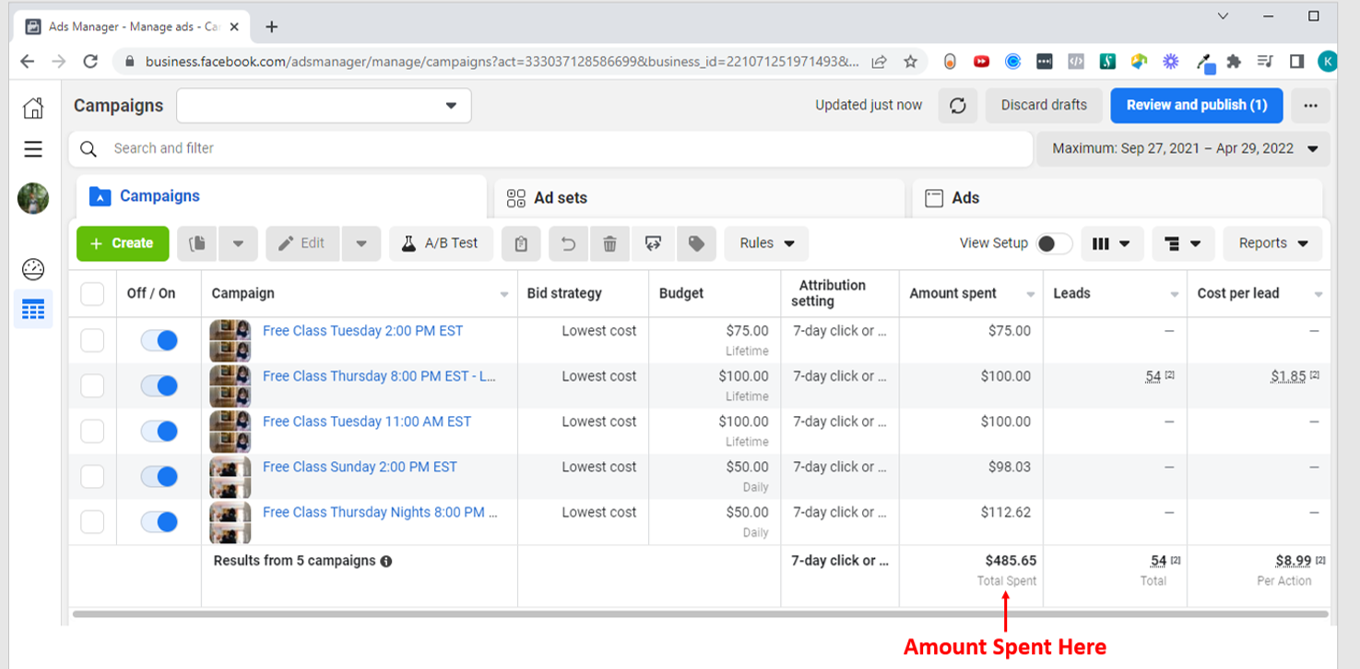
Finally, look at how many leads you acquired.
Facebook likes to make this complicated. You might use the column “Leads” and end up with three categories, “Website Leads,” “Offline Leads,” and “On-Facebook Leads.” You can include any or all of these, the important part is that you count all the leads that Facebook attributes to an ad. To make it simple, you may just want to turn those columns off and stick with “Leads,” which is the total of all three.
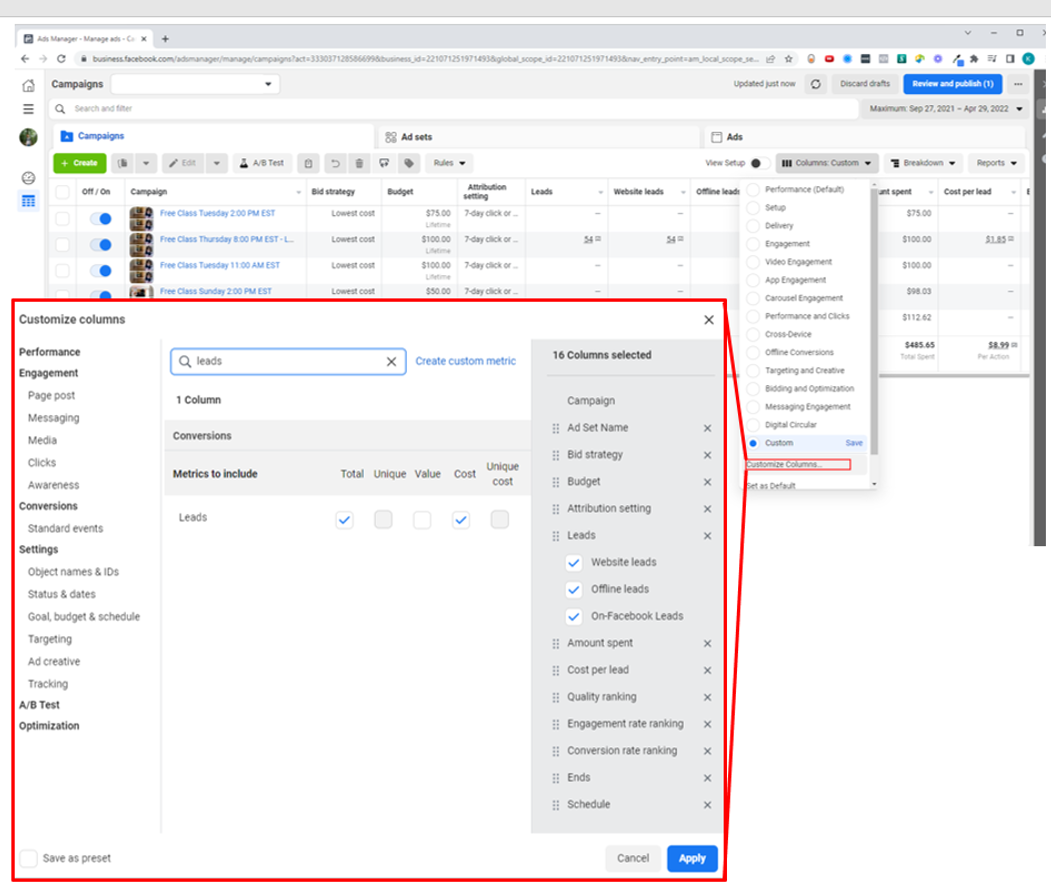
The total number of leads can then be grabbed from the “Leads” column in Ad Manager. Total leads in this example is 54.
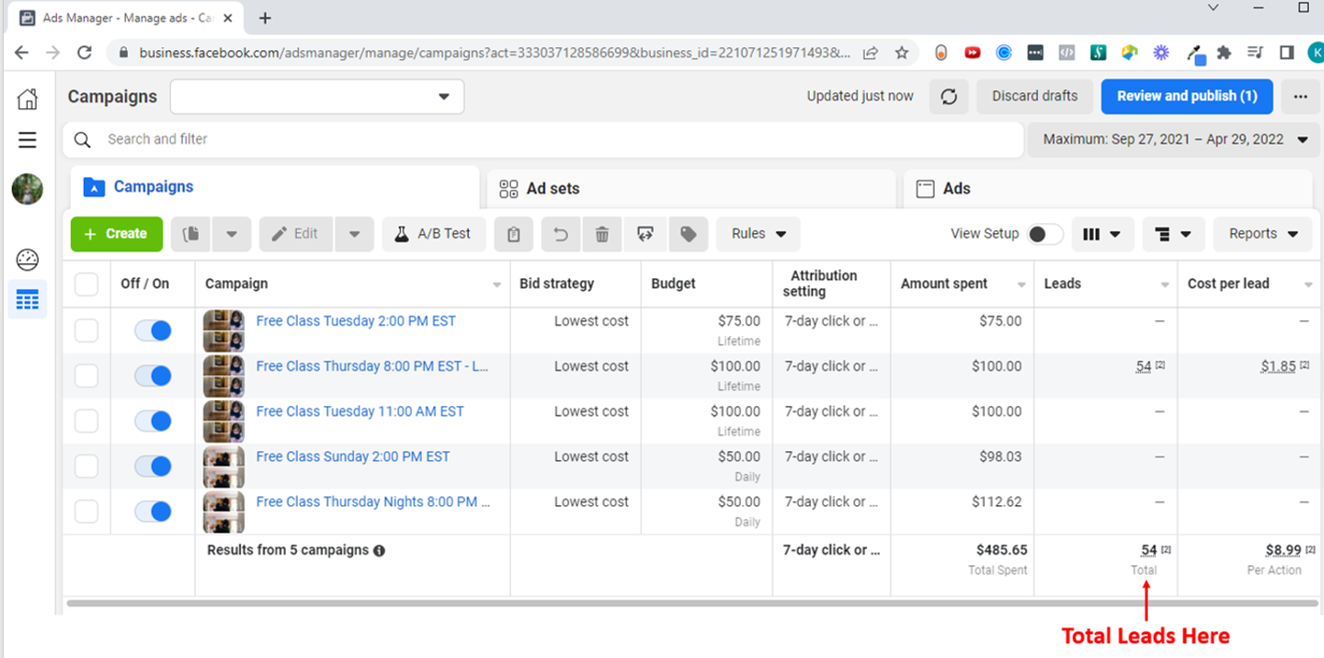
You would then use the formula to calculate your CPL. In this case CPL was $8.99 per lead.

Of course, you can do all this for each channel, campaign, or ad, and have a fancy pants spreadsheet that is a pain to keep up with.
Or you can get a Wicked Reports dashboard and instantly see your CPL at the channel, campaign, or ad level without having to manually transfer numbers from Ad Manager or pray that they are correct.
Here is an example of a Wicked ecommerce client's Mission Control, which easily shows CPL for each channel.
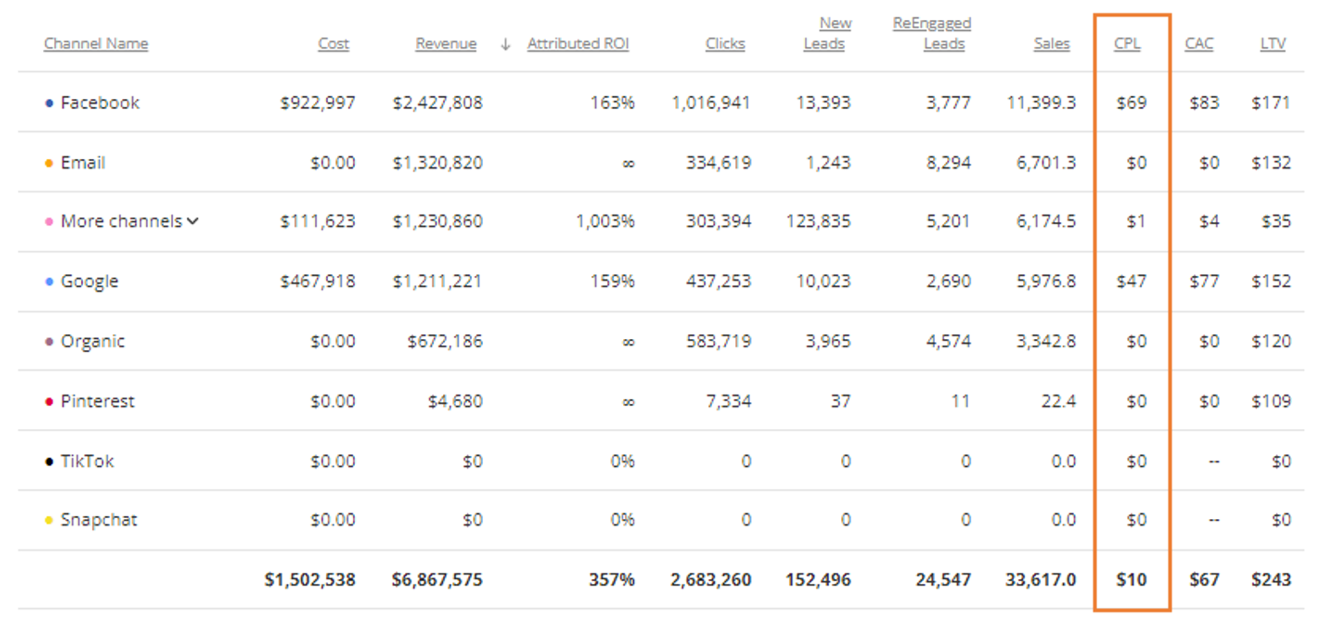
Wicked Reports also offers ROI reporting that provided CPL (as well as revenue, CAC, LTV and many other important metrics) right down to the ad campaign level.
This gives our clients a powerful leg up on their competition, because they can make marketing decisions based on accurate attribution data quickly and easily.
What Is a Good Cost Per Lead?
Media buyers often focus on CPL, because it’s an easy metric to measure.
Here’s the cave man version of tracking your performance by CPL:
✅ Lower CPL is good. 😊
❌ Higher CPL is bad. 😱
But experienced marketers know that lower CPL does not always equal higher sales.
In fact, lower CPL often means you are bringing in lower quality leads, which results in lower conversion to sales and a lot of frustration, especially if you are trying to scale. Don’t make this mistake.
Balancing CPL and lead quality is a tightrope. An experienced media buyer can help you to ensure you are optimizing your spend with purchases, instead of focusing primarily on CPL.
You want to be in the sweet spot between bringing in just a few unaffordable leads that aren’t enough to support your business and tons of worthless leads that are burning through your ad spend.

This number is going to be different for each niche and brand, but generally speaking you probably already have an idea of whether $5 or $200 is a reasonable CPL.
The trick here is to figure out if those leads are converting and whether you are seeing improvements over time.
That is why at Wicked Reports we recommend you focus more on Customer Lifetime Value (LTV) rather than CPL. It’s a much more effective measurement of advertising effectiveness and the health of your brand.
Improving Cost Per Lead
Even though I've just told you that CPL might not be as useful as you thought, I know you're probably going to want to track it any way. And if your CPL isn't what you think it should be, you're probably going to want to take action to improve it.
Here are some of the best strategies to improve CPL on your advertising:
- Spend more on channels or audiences that are already performing well.
- Use a lookalike audience based on leads you already have in your email list.
- Ask your current leads what content interests them - do a market research survey and use that information to improve your messaging and/or offer.
- STOP PAYING ATTENTION TO CPL AND START TRACKING LTV INSTEAD.
Thank you for coming to my "Ted Talk" about Cost Per Lead as a marketing metric.
Check out Wicked Reports and see how you can scale paid traffic! We have a great dashboard for tracking both CPL and LTV that will help your brand to scale with accurate attribution data.




